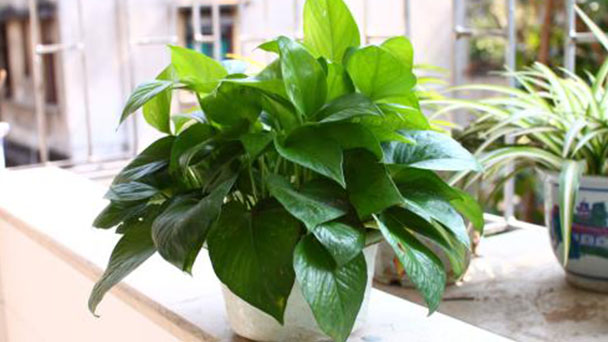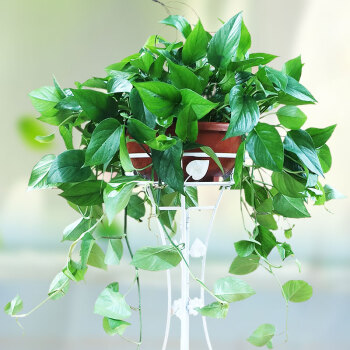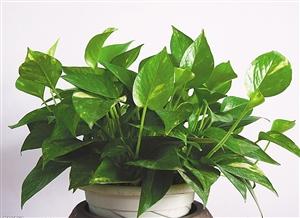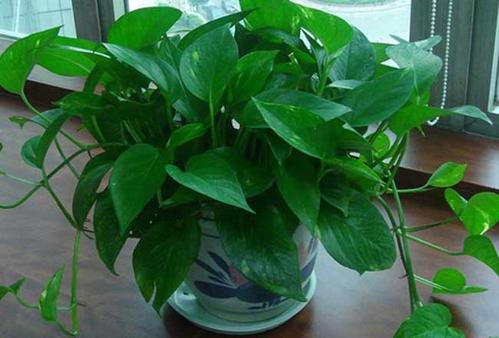How to Propagate Devils Ivy (Epipremnum Aureum)
Written by Maggie
Nov 15 2021

Devil's Ivy (Epipremnum Aureum) is a common indoor plant, recently a netizen asked uncle gardener: How to propagate Devil's ivy? What are the breeding methods and precautions? Let's follow and learn about common propagation methods of Devil's ivy.

Devil Ivy - Most Common House Plant
The propagation methods of Devil's ivy
1. Layering: Layering the most stupid method of propagation for devil's ivy, but also a method of the highest survival rate. This method is also relatively simple. First, the creeping rhizome is inserted into the soil, and it is completely covered with a hand or a tool. After some time, the rhizome will grow out of the air roots. At this time, it is trimmed or cut with scissors and the reproduction is completed.
2. Cutting: Generally, cutting method is adopted for the propagation of devil's ivy. In late spring or early summer selected robust devil’s ivy, shearing 15 cm stems to 30 cm, base section 1 to section 2 of the blade. Be careful not to hurt the adventitious roots, and then insert the element in the sand, or cinders, 1/3 of the depth of the cuttings, pour enough water placed in the shade, a day to the foliar spray or covering plastic film moisturizing, as long as keep the environment of no less than 20 ℃, the survival rate is above 90%.
3. Water insertion: In fact, everyone should have heard that the propagation and planting of the rich bamboo can be completed in the water, and the devil's ivy can also be. First, select a whole devil's ivy with three parts: roots and leaves. Fill a bottle with water and put it in. Next change clear water regularly, change for 3 days commonly, such repeat about half a month or so can see green radish breed success.
Read More:
Epipremnum Aureum (Golden Pothos) Growing & Propagation

Devils Ivy is one of the plants that can grow in water
Cares for propagations of devil's ivy
Ventilation for devil's ivy
Devil's ivy prefers wet and cloudy environments, so people will ignore that the growing environment of devil's ivy also needs ventilation. The lack of ventilation slows the growth of devil's ivy and makes their leaves yellow. Especially when the surrounding environment is moderately large, more attention should be paid to ventilation.
Moderate water for devil's ivy
Devil's ivy likes water, so we need to water devil's ivy frequently. Water - fed devil's ivy should be changed frequently, 3-5 days for a change. Earthen devil's ivy are often watered on stems and pillars to promote rooting and growth.
Reduce the light for devil's ivy
The devil's ivy likes the shade, but the whole shade is not good. When we care for devil's ivy, we can plan to regularly move the green plant to a place with light.

Control the temperature for devil's ivy
The growth of devil's ivy is the fastest at 20℃, lower than 10℃, and higher than 30℃ will be restricted. But there is an exception in winter. In winter, the plant is easily exposed to cold, but there is no need to worry. Leaves that turn yellow in winter will grow again in spring.
Ensure the humidity for devil's ivy
The devil's ivy should be watered frequently to ensure humidity. Often spray around the leaves for soil devil's ivy, and often change the water for water - cultured devil's ivy, to ensure that the water is clean and active.
Reasonable fertilizer for devil's ivy
The devil's ivy is not very sensitive to fertilizer. When we care for devil's ivy, nitrogen fertilizer can be applied once every half a month. A thin layer on top will promote the growth of the green plant.
Timely pruning for devil's ivy
Do not allow the devil's ivy to grow excessively. When the leaves are too long and too thin to appropriate pruning, improve the ornamental value of devil's ivy. Read Next: How to Trim Devils Ivy
Latest Updated
- Benefits of Bugleweed - 7 Science-backed Health Benefits
- Bugleweed Dangers & Side Effects - Is It Poisonous?
- How to Plant Evergreen Trees - What You Should Know
- When to Plant Evergreens - Grow Guide for Evergreen Trees
- 12 Wonderful Evergreen Shrubs for Your Garden
- 12 Popular Evergreen Plants with Pictures for Beginners
- When And How To Prune A Lilac Bush Like a Pro
- How to Grow & Care for Lilac Vine (Hardenbergia Violacea)
- Japanese Lilac Tree (Syringa Reticulata) Care & Propagation Guide
- Shumard Oak Pros and Cons - What to Know
Popular Articles
- Winter maintenance of Antirrhinum Majus
- How to Grow Terminalia Mantaly Tree
- How to Grow and Care for Crossostephium Chinense
- How to grow Antirrhinum Majus in spring
- Peristeria Elata (Dove Orchid) Profile: Info & Care Guide
- Underwatered Snake Plant (Sansevieria Trifasciata) - Signs And How To Fix
- How to Care for Brazilian Jasmine Plant (Mandevilla Sanderi)
- How to Grow & Care for Graptopetalum Purple Delight in Summer
- Rosa Chinensis (China Rose): Plant Growing & Care Tips
- How to Care for Baby Sun Rose (Aptenia Cordifolia)